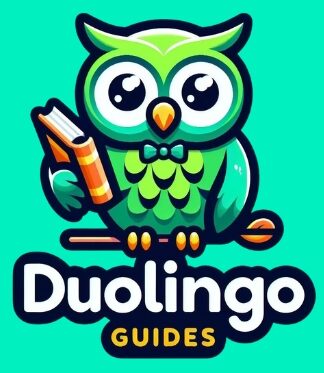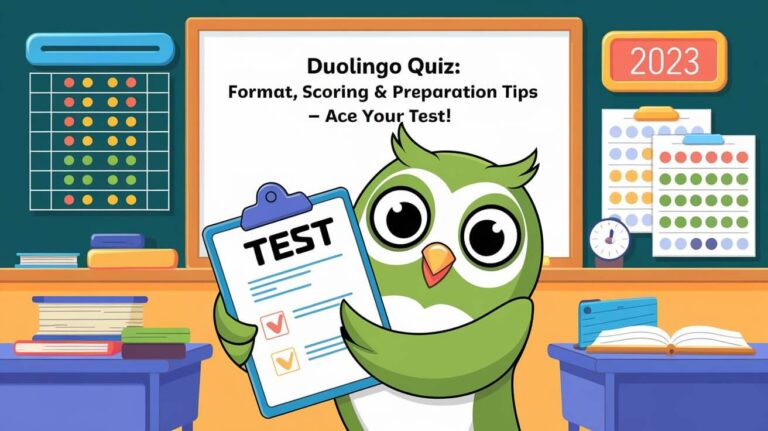Learning a new language? Duolingo alone won’t make you fluent. But don’t toss it out yet! It’s a great tool when used with other methods. This guide looks at what Duolingo can and can’t do. We’ll share tips to get the most out of it and mix it with other resources for real fluency.
Duolingo has become super popular. It’s a fun, easy way to start learning languages. Over 500 million people use it worldwide. That shows how many folks want simple language lessons. But can this free app really teach you a whole new language? Let’s find out.
How Duolingo Works as a Language Learning Platform
Duolingo is structured as a game-like progression through various language lessons and levels. Users earn points, unlock new content, and level up as they complete different exercises and challenges. The lessons cover a wide range of vocabulary, grammar, and communication skills, with a focus on practical, conversational language.
The app utilizes a variety of interactive lesson formats, including:
- Translations (translating phrases from the target language to your native language, and vice versa)
- Listening comprehension (transcribing spoken phrases)
- Speaking practice (recording yourself saying a phrase out loud)
- Matching words or phrases to images
- Fill-in-the-blank exercises
Duolingo’s methodology is based on the principles of spaced repetition and incremental learning. The app tracks your progress and uses an algorithm to surface content you’re struggling with, ensuring that you continuously review and reinforce the material.
The Pros of Using Duolingo for Language Learning
Duolingo’s key strengths as a language learning tool include:
Accessibility and Convenience
As a free, app-based platform, Duolingo makes language learning highly accessible. You can practice on the go, squeezing in quick lessons during your commute or spare moments throughout the day. This low barrier to entry is a major draw for busy individuals.
Engaging, Gamified Approach
Duolingo’s game-like structure, with points, levels, and achievements, can be highly motivating. The app taps into our innate desire for progress and accomplishment, encouraging users to build a consistent daily habit of language practice.
Ability to Learn Multiple Languages
Duolingo offers courses in over 30 languages, allowing users to explore a diverse range of languages on the same platform. This makes it easy to try out new languages or maintain proficiency in multiple tongues.
Usefulness as a Supplementary Tool
While Duolingo may not be enough on its own to achieve fluency, it can be a powerful complementary resource when combined with other language learning methods, such as classes, language partners, immersion activities, and targeted practice.
The Limitations of Duolingo for Achieving Language Fluency
Although Duolingo has many positive attributes, it also has some significant limitations when it comes to developing true language fluency:
Speech Recognition Challenges
One of the key criticisms of Duolingo is the limitations of its speech recognition capabilities. The app often struggles to accurately detect and provide feedback on user pronunciation, which can be frustrating and hinder the development of spoken language skills.
Lack of Comprehensive Language Mastery
Duolingo’s focused approach on vocabulary, grammar, and basic sentence structure is valuable, but it doesn’t necessarily translate to the broader skills required for fluency. Things like advanced grammar, idiomatic expressions, conversational nuance, and cultural understanding may not be fully addressed.
Overreliance on Passive Learning
While Duolingo can be an effective tool for passive vocabulary acquisition and reinforcement, it doesn’t necessarily promote the active language production and spontaneous communication that are essential for fluency. Users may get stuck in a pattern of simply translating or recognizing phrases, rather than freely expressing themselves.
Potential for Superficial Learning
The gamified, bite-sized nature of Duolingo lessons can sometimes lead to a more superficial level of learning, where users are simply trying to earn points and progress through the levels, rather than deeply engaging with the language.
Tips for Maximizing Your Language Learning with Duolingo
To get the most out of Duolingo as part of your language learning journey, consider the following strategies:
Incorporate Duolingo into a Broader Approach
View Duolingo as a valuable supplementary tool, but not the sole solution for achieving fluency. Combine it with other resources, such as language classes, language partners, immersion activities, and targeted practice.
Actively Engage with the Content
Don’t passively tap through the lessons – make a conscious effort to speak the phrases aloud, write them down, and personalize the content by creating your own sentences and stories.
Supplement Duolingo with Grammar and Conversation Practice
While Duolingo covers the basics of grammar and communication, dedicate time to studying more advanced grammatical concepts and practicing spontaneous conversation, either through additional resources or with a tutor or language partner.
Set Achievable Goals and Maintain Consistent Practice
Establish a regular Duolingo routine, whether it’s 10 minutes per day or a few lessons per week. Celebrate small wins and don’t get discouraged by the app’s decay system, which can make it seem like you’re losing progress.
Leverage Duolingo’s Supplementary Features
Take advantage of Duolingo’s discussion forums, podcasts, and other supplementary resources to deepen your understanding of the language and culture.
Experiment with Different Learning Styles
Some users may find greater success by using the web version of Duolingo, which offers more robust features and tools than the mobile app. Others may prefer to use Duolingo in conjunction with physical flashcards or other hands-on learning methods.
The Bottom Line
Duolingo is a good tool for learning languages, but it won’t make you fluent by itself. It’s great for building basic skills in a fun way. To really master a language, you need to do more than just use the app. Try taking classes, talking with native speakers, and learning about the culture. Use Duolingo as part of a bigger plan to learn the language.
If you want to learn a new language, don’t just rely on Duolingo. Use other tools too. Keep practicing regularly and be patient. With hard work and the right mix of resources, you can reach your language goals.







